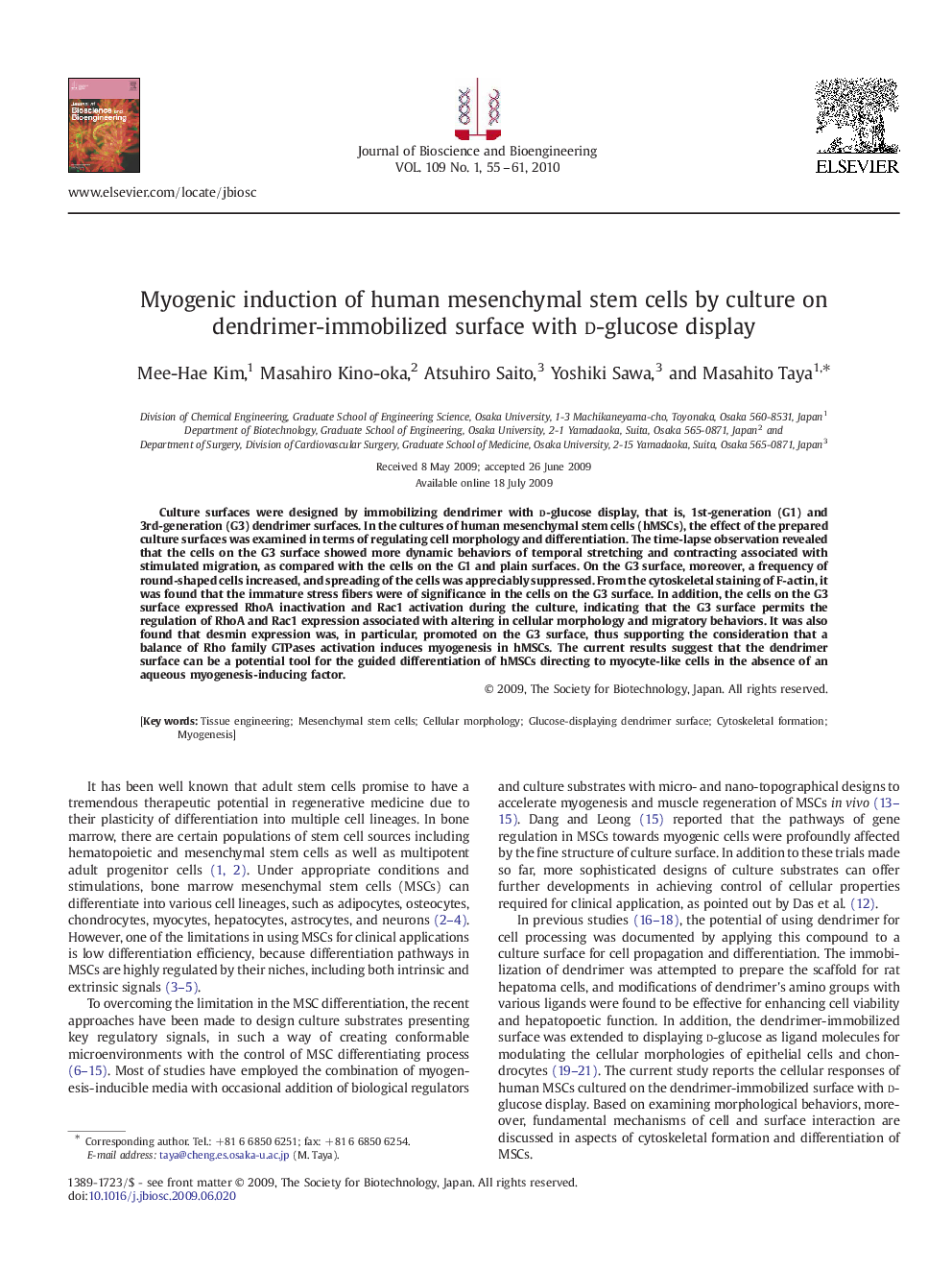| Article ID | Journal | Published Year | Pages | File Type |
|---|---|---|---|---|
| 21542 | Journal of Bioscience and Bioengineering | 2010 | 7 Pages |
Culture surfaces were designed by immobilizing dendrimer with d-glucose display, that is, 1st-generation (G1) and 3rd-generation (G3) dendrimer surfaces. In the cultures of human mesenchymal stem cells (hMSCs), the effect of the prepared culture surfaces was examined in terms of regulating cell morphology and differentiation. The time-lapse observation revealed that the cells on the G3 surface showed more dynamic behaviors of temporal stretching and contracting associated with stimulated migration, as compared with the cells on the G1 and plain surfaces. On the G3 surface, moreover, a frequency of round-shaped cells increased, and spreading of the cells was appreciably suppressed. From the cytoskeletal staining of F-actin, it was found that the immature stress fibers were of significance in the cells on the G3 surface. In addition, the cells on the G3 surface expressed RhoA inactivation and Rac1 activation during the culture, indicating that the G3 surface permits the regulation of RhoA and Rac1 expression associated with altering in cellular morphology and migratory behaviors. It was also found that desmin expression was, in particular, promoted on the G3 surface, thus supporting the consideration that a balance of Rho family GTPases activation induces myogenesis in hMSCs. The current results suggest that the dendrimer surface can be a potential tool for the guided differentiation of hMSCs directing to myocyte-like cells in the absence of an aqueous myogenesis-inducing factor.
